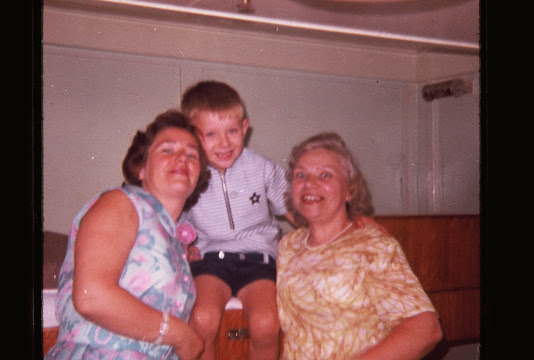How Thanksgiving Made It's Debut michael streich
The first Thanksgiving,
celebrated by Pilgrim colonists and Wampanoag Indians in 1621, was very
different from the traditional Thanksgiving observed every November in
contemporary America.
Having barely survived their first New England
winter, the Pilgrims, upon late year harvesting, set aside a day of giving
thanks. They could not have accomplished this without assistance from the
native peoples. Contemporary Americans interested in duplicating this first
Thanksgiving meal will be in for a surprise. Among the several missing
ingredients was the dominant part of each Thanksgiving feast, the turkey.
The First Thanksgiving Feast
in 1621
Writers and food historians
differ as to what specific foods were served at that first Thanksgiving.
Anthropology professor Anthony Aveni, for example, writes that Pilgrim men were
sent out to kill wild turkeys and other fowl for the feast. British historian
Godfrey Hodgson, however, denies that wild turkey was part of the feast, citing
the archeological absence of any turkey bones found at the early settlement as
well as the inability to shoot turkeys with the type of weaponry used by the
Pilgrims.
Fowl killed for the meal
included duck and geese. Original source records from that early period all
state that when the Wampanoag Indians arrived, they brought five slain deer.
Thus, the first Thanksgiving featured venison, although it was cooked as a stew
that included beans, corn, and squash. Robert Ellis Cahill, commenting on this
first feast in his analysis of the first American cookbook from New England, states that Indians also brought oysters.
Contemporary Thanksgiving
Foods not Found at Plymouth
in 1621
The Pilgrims served no
pumpkin pies, although pumpkins were grown by the native peoples. In later
years, pumpkin slices were fried and then baked as a pie. But in 1621, the
Pilgrims had no ovens. Additionally, sweet potatoes did not exist in New England. This also was missing at the first
Thanksgiving.
Cranberries grew in abundance
and the native peoples cooked them as a sauce for fish and meats. Europeans,
however, would not learn about this until the 1670s. Further, in 1621, the
Pilgrims had no sugar, necessary in the preparation of a Thanksgiving cranberry
sauce.
Corn bread, however, was most
likely present at the first Thanksgiving. According to Cahill, corn bread as
well as corn on the cob was introduced by the Wampanoags at this first
festival. Indian bread was made from roasted corn ears, something that could
even be taken on long journeys. Beans were also prominently featured. Beans
contained protein and came in a number of varieties. In future generations, New England would become famous for baked beans, usually
made with the kidney bean.
The First Thanksgiving was a
Celebration of the Harvest
The Pilgrims learned much
from their Indian neighbors. Native peoples showed the Europeans how to use
fish such as lobster to fertilize crops. Unlike Europeans used to the
crop-rotation methods dating back to the Middle Ages, Indians in New England grew most of their crops together so that one
type of plant would enhance the growth of others. Pumpkins, for example, grew
on the outer rim, thus protecting corn, squash, and peas from weeds.
Aveni writes that, “Every
agrarian culture sets its own time of the year aside for the purpose of giving
thanks, usually at the beginning of the end of the harvest season…” European
traditions, well known by Pilgrims, celebrated the harvest period in a variety
of ways, many tied to either old pagan festivals or Christian adaptations. Anthropologists
cite such harvest practices as nearly universal and trace them back to ancient
times.
Celebrating an Authentic
Pilgrim Thanksgiving
Americans desiring to
replicate the first Thanksgiving must be prepared to give up apple and pecan
pies, mashed potatoes, stuffing, and the centerpiece roast – the turkey.
Substituting venison, which is sold at grocers like Whole Foods or can be
ordered on line, cooked as a stew with the appropriate vegetables and served in
a common bowl would be a courageous start.
Not all foods, however, need
to be so different. In 1621, the Indians heated their corn, creating pop corn.
According to Cahill, the Pilgrims had butter, saved from their voyage. Although
rancid, the Indians doused the buttery liquid over their pop corn, perhaps the
first time in America
that anyone snacked on hot buttered pop corn.
Sources:
Anthony Aveni, The Book of the Year: A Brief History of Our
Seasonal Holidays (Oxford
University Press, 2003)
Evelyn L. Beilenson, editor, Early American Cooking: Recipes from
America’s Historic Sites (Peter Pauper Press, Inc.,1985)
Robert Ellis Cahill, Sugar and Spice and Everything: A History of
Food and America’s First Cookbook (Old Saltbox, 1991)
Godfrey Hodgson, A Great and Godly Adventure: The Pilgrims
and the Myth of the First Thanksgiving (Perseus Books, 2006)
Jack Weatherford, Indian Givers: How the Indians of the Americas
Transformed the World (Fawcett Books, 1988)




